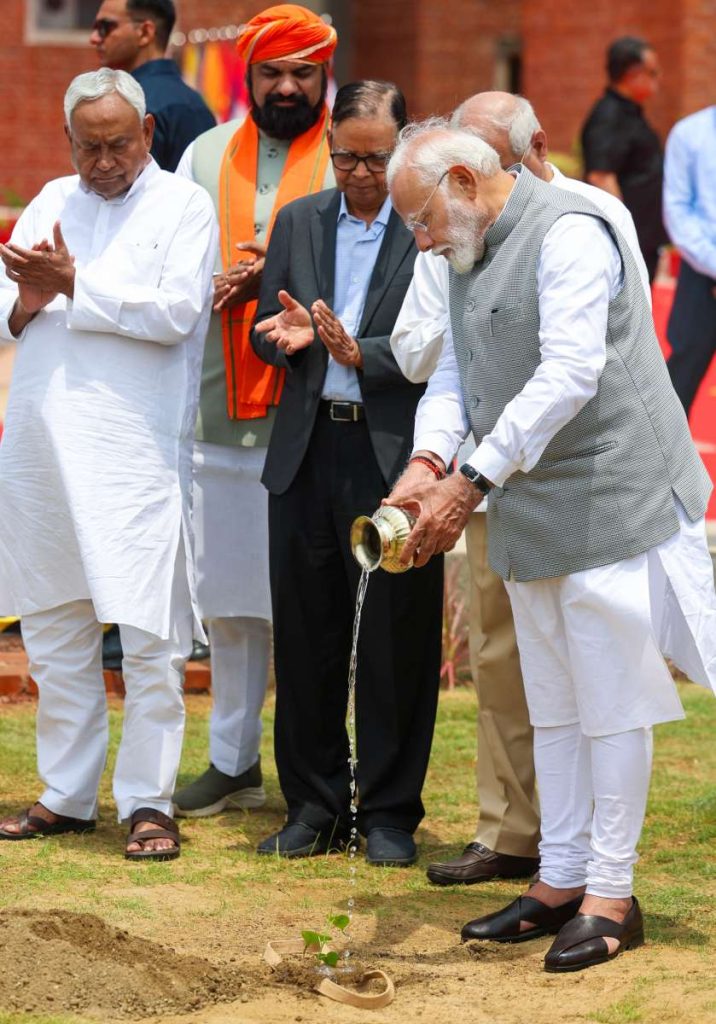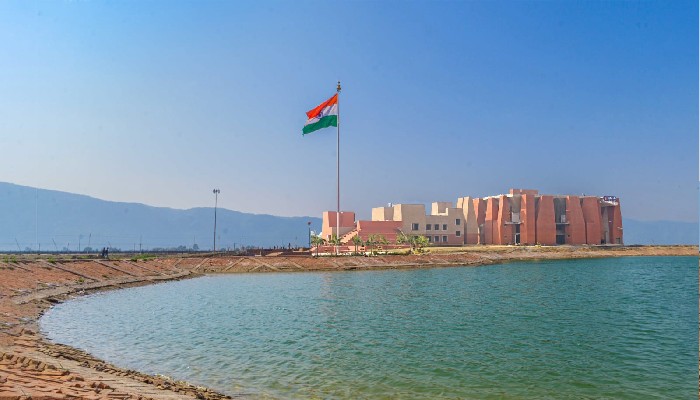Established in the 5th century by King Kumargupta of the Gupta empire, Nalanda became a beacon of intellectual excellence and its teachings formed the bedrock of modern-day science and technology, writes Ranjit Kumar
The scholars were overwhelmed with emotion as they witnessed the inauguration on June 19 by the Prime Minister Narendra Modi, of the newly established campus complex at the renowned ancient University of Nalanda.
This significant occasion marked the revival of an ancient institution, adding a sense of historical significance to the event. The event served as a poignant reminder of the university’s prestigious past and the promising future that lay ahead.
History of Nalanda University
The ancient university of Nalanda, located in present-day Bihar, was not only the oldest but also the largest residential university in the world.
With a student population of over 10,000 and a teaching faculty of 2000, Nalanda was a thriving centre for various fields of study including mathematics, astronomy, medicine, religion, philosophy, and science. Its significance in the realm of knowledge cannot be overstated.
Established in the fifth century by King Kumargupta of the Gupta empire, Nalanda became a beacon of intellectual excellence and its teachings formed the bedrock of modern-day science and technology.

The university’s rich legacy is still evident today and it has been recognized as a UNESCO world heritage site.
Tragically, Nalanda met its untimely demise in the 12th century when it was ravaged and set ablaze by the Turko-Afghan invader Bakhtiyar Khilji.
The destruction was catastrophic, with the university campus, along with its vast collection of over 9 million books and numerous buildings, burning for a period of six months.
Testament of ancient Indian education system
Prime Minister Narendra Modi aptly stated in his inaugural speech, while buildings can be destroyed, knowledge cannot. The knowledge that emanated from Nalanda has had a profound impact on the development of mankind.
It was at Nalanda that the concept of ‘Zero’ was developed under the guidance of the renowned astronomer Aryabhata, who played a pivotal role in steering the university to international acclaim.
The fame of Nalanda attracted scholars and students from all corners of the world, including the renowned Chinese traveller Huen Tsang, who spent two years at the university during his visit to India from 630 to 643 AD.

The story of Nalanda serves as a testament to the achievements of the ancient Indian education system. Its ruins stand as a reminder of the intellectual prowess and the pursuit of knowledge that characterized the university.
As a UNESCO world heritage site, Nalanda should inspire Indian leadership to transform the country into a global hub for knowledge and education.
The legacy of Nalanda continues to resonate, and its teachings have laid the foundation for the advancements in various fields that we witness in the present day.
The destruction of Nalanda may have been a tragedy, but its enduring impact on the world of knowledge is a testament to the indomitable spirit of human intellect.
Revival of Nalanda University
Nalanda’s rich history is primarily known through the detailed accounts provided by Huen Tsang, who vividly described the life and times of the university.
It is fascinating to note that Nalanda University was established more than 500 years prior to the founding of the University of Oxford in 1096 AD in England. The sheer magnitude of this time gap highlights the immense significance and antiquity of Nalanda as an educational institution.
While it would be an arduous task to replicate the teaching and research traditions, as well as the exceptional facilities that once thrived at Nalanda, the Government of India, in collaboration with 17 member countries of the East Asia organization, has made a commendable effort to revive the unique traditions established by the university’s management.
The revived University of Nalanda, situated near the ruins of the original university complex, aspires to foster an international atmosphere.
The inspiration to revive this educational and learning complex was initiated by the esteemed former President, Dr. Abdul Kalam.
The first concrete step towards reviving the university was taken during the 2007 East Asia summit held in the Philippines, where a proposal to restart the university with international collaboration was endorsed.
Although teaching initially commenced with a small faculty in a rented complex in 2014, the University has now unveiled a sprawling complex spanning 455 acres, capable of accommodating 7500 students and teachers.
The architects have meticulously endeavoured to recreate the architectural and geographical essence that the ancient University would have provided.
Symbol of India’ academic heritage
During the inauguration of this grand complex, Prime Minister Modi, in the presence of Dr. S. Jayshankar, the Minister of External Affairs, and ambassadors from 17 countries, expressed his belief that the rebuilding of the ancient university would herald a golden era for India.

The Prime Minister lauded the rich history of Nalanda, emphasizing its significance as a symbol of India’s academic heritage and vibrant cultural exchange. He further emphasized that Nalanda’s revival is not merely a renaissance of India’s cultural past, but also a testament to the shared heritage of numerous countries connected to this esteemed place.
The Prime Minister’s words underscore the profound impact and global relevance of Nalanda University, making it a beacon of knowledge and cultural exchange for the world to admire.
Dr Jayshankar emphasized the significance of the revival of the global bridge of learning in his address. He expressed his belief that this bridge has the potential to foster relationships that surpass those of the past.
This momentous occasion filled India with pride and a sense of history. Through this university, the world will gain insight into India’s rich knowledge traditions and its invaluable contributions to various fields such as mathematics, astronomy, science and technology, religion, and philosophy.
Conclusion
India was not only home to Nalanda University but also boasts numerous other ancient universities that have stood the test of time for thousands of years.
One such example is the Takshashila University, established in 700 BCE, which is considered the oldest Indian university and is located in present-day Pakistan.
Scholars from various regions flocked to Takshashila to study subjects like mathematics, law, medicine, and philosophy.
Another notable rival of Nalanda was the Vikramshila University, which attracted students from India, Tibet, China, and other regions. Additionally, lesser-known universities like Pushpagiri University, Valabhi University, Odantapuri University, and Jagaddala Mahavihara also flourished during this era.
The new complex of Nalanda University currently houses six schools, each specializing in different fields of study. These schools include Historical Studies, Ecology and Environmental Studies, Buddhist Studies, Philosophy and Comparative Religion, Languages and Literature, Humanities, and Management Studies and International Relations.
It is worth mentioning that the university has garnered international participation, with 17 other nations, including Australia, New Zealand, Portugal, Singapore, South Korea, Sri Lanka, and Thailand, actively involved in its programs and initiatives.
(The writer is a senior journalist and strategic affairs analyst; views expressed here are his own) – India News Network
ALSO READ: ‘Baloch women lead protest movement against Pakistan’


